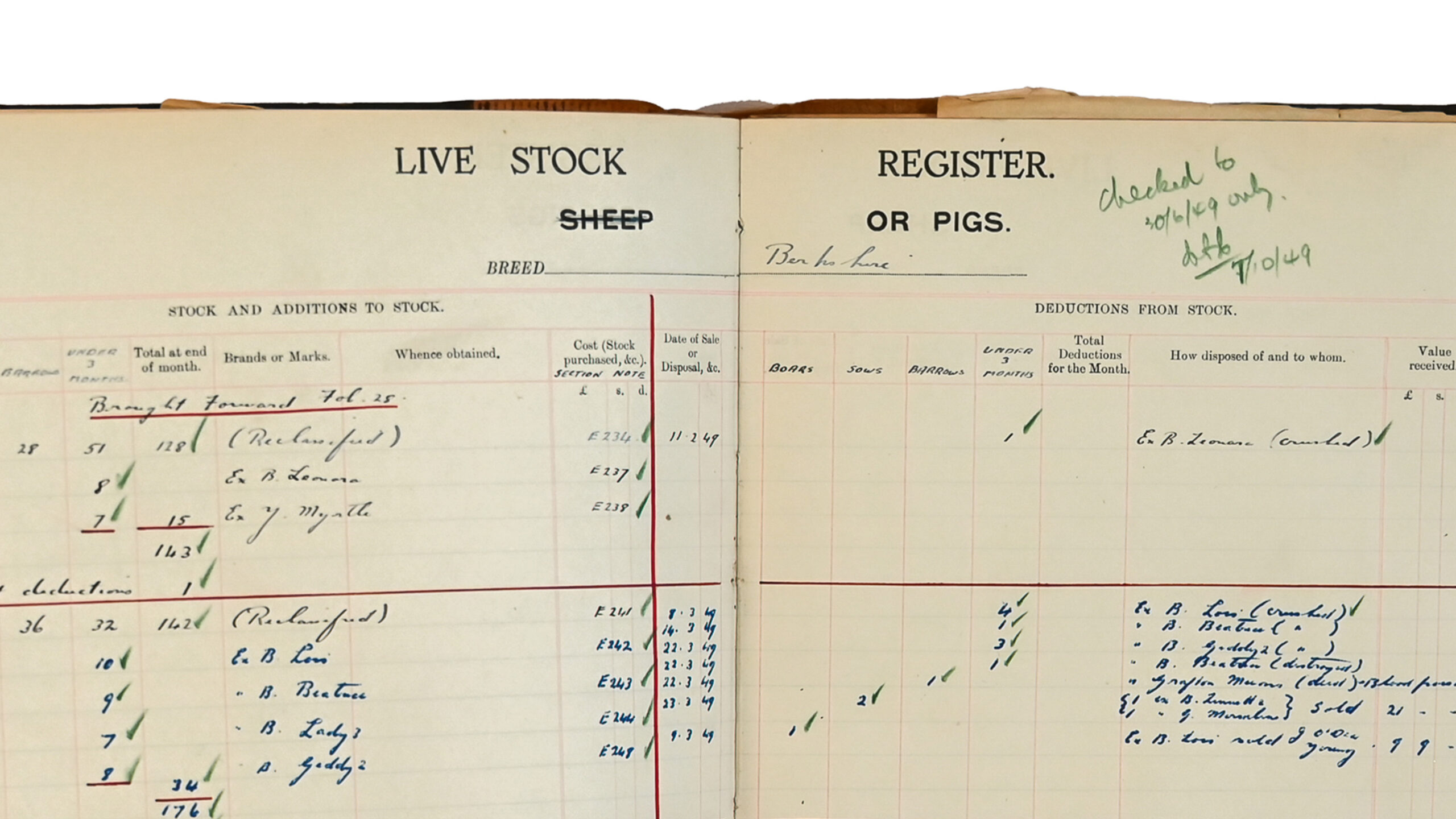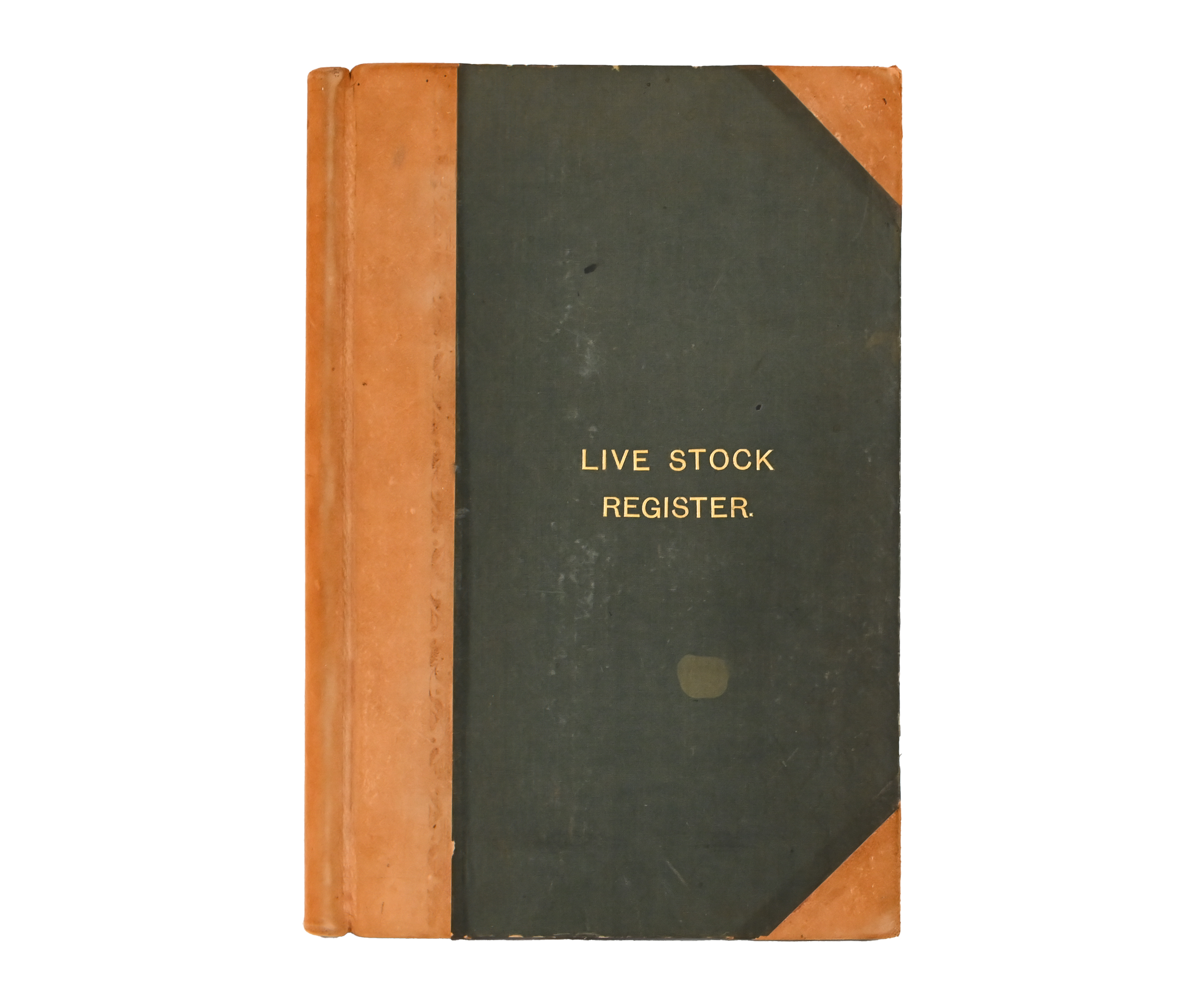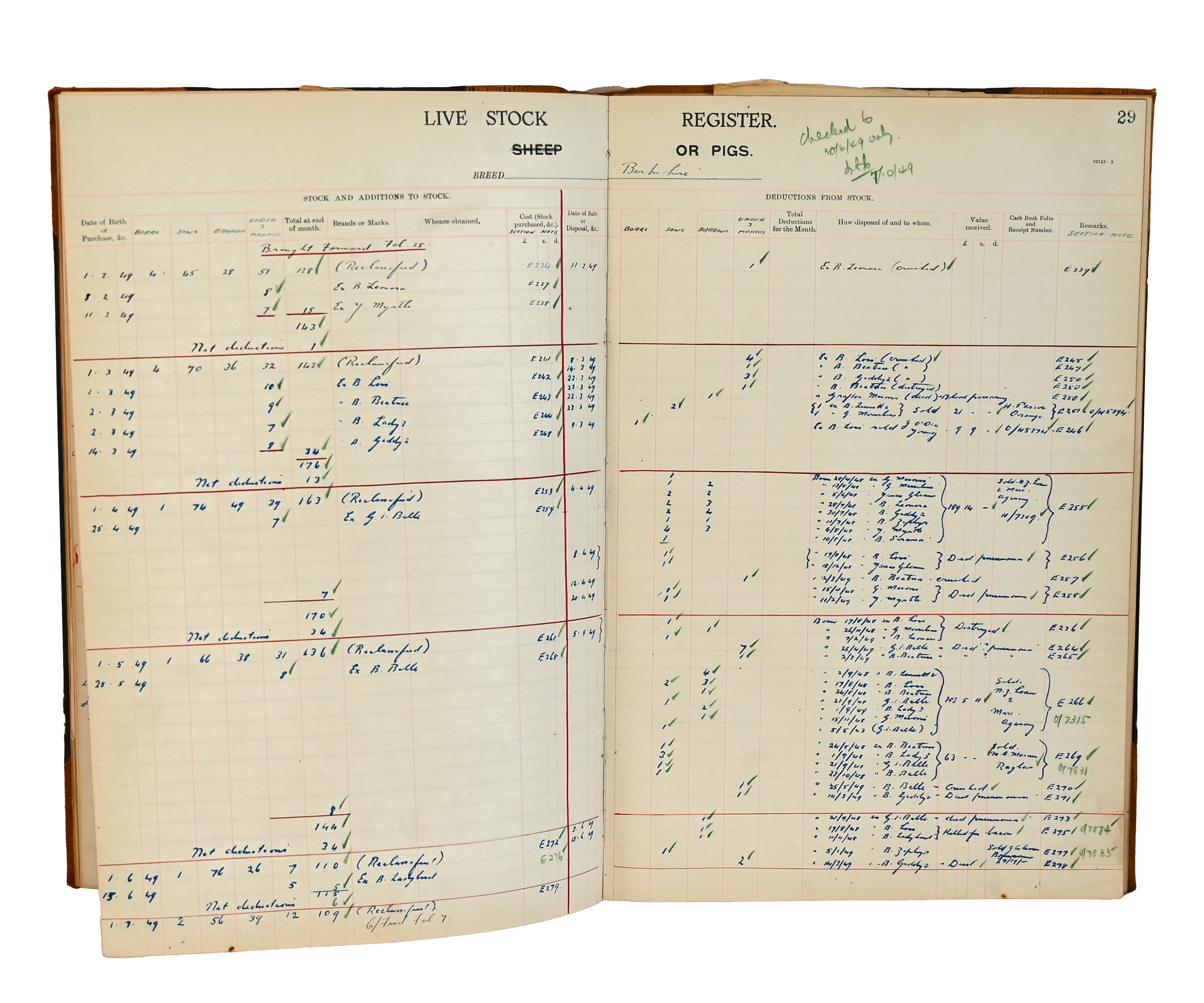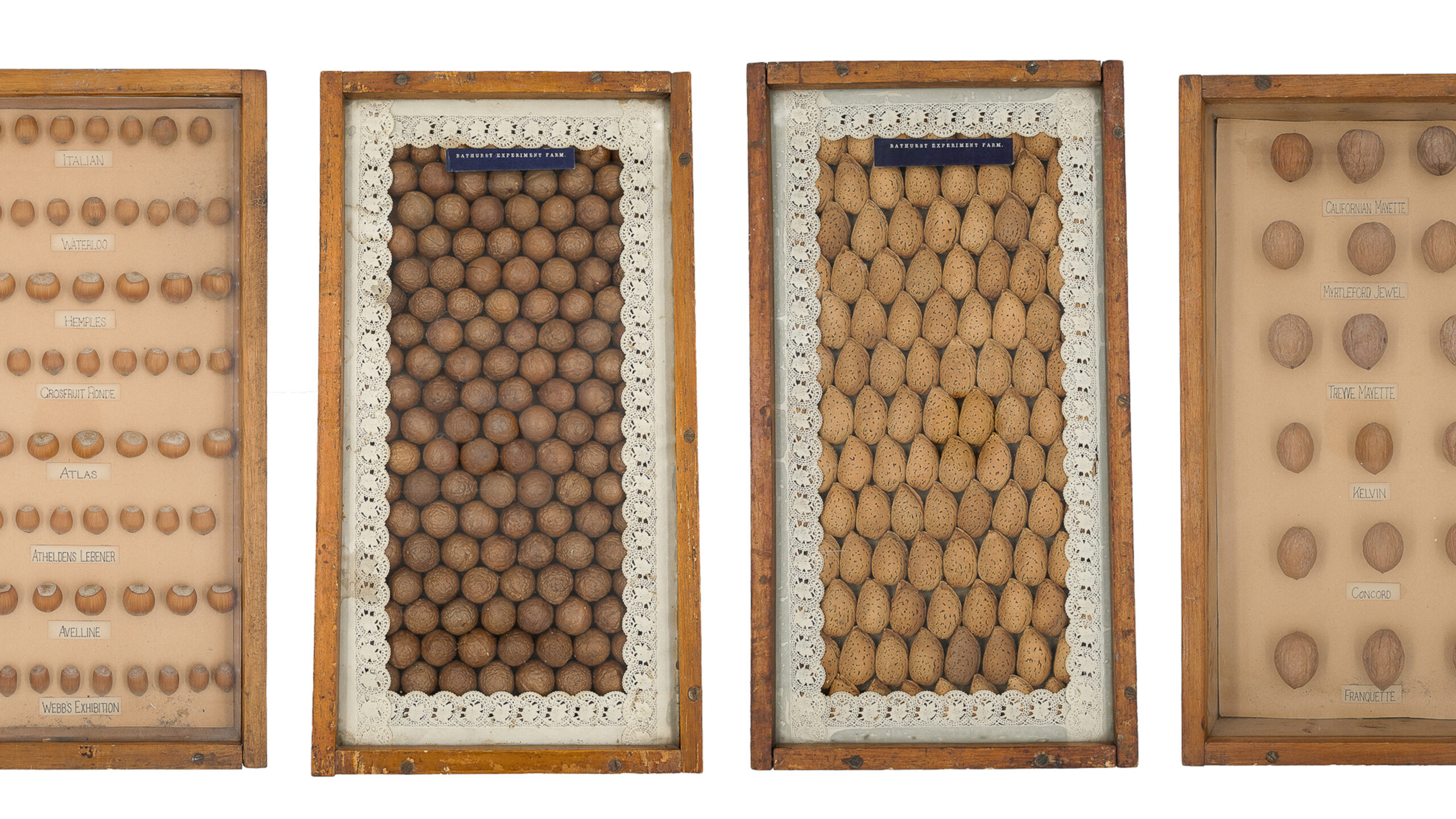Bathurst Joy
A Piggery of State-Wide Esteem
Although students at Charles Sturt University, Bathurst, may not know it (and may not want to know), their accommodation is situated where the piggery of the Bathurst Experiment Farm was formerly located. The piggery was just one of the studs kept at the Farm and this book records the number of horses, sheep and pigs kept during 1930-1940 and what happened to them.
After experimenting with a number of breeds, Ayrshire cattle, Ryeland sheep and Berkshire pigs were finally settled upon as most suited to the climate. Over time the studs were expanded by the importation of stock from the United Kingdom and, in the case of the piggery, the transfer of stock between the various State Experiment Farms. In 1931, three sows from Grafton Experiment Farm were transferred to Bathurst after mating with an imported boar, and another boar, Glen Innes Monarch, was acquired in 1940. Such transfers are evident in the names of some of the sows listed on this page: Glen Innes Belle, Yanco Myrtle, and Grafton Mavis.
The Farm’s piggery was very successful. A team of boars and sows were chosen to represent the NSW State Farms at the Royal Easter Show in Sydney and Bathurst Joy ‘a very sweet youngster’ was named runner up to the champion sow. Success also came from sales with top prices realised and demand for breeding stock often outstripping supply.
The Farm’s research on breeding and sales of stud animals helped to improve the quality of flocks and herds in NSW and was complemented by demonstration days and the publication of stock management notes in newspapers. Which together achieved the government’s intention in establishing the Experiment Farms: an improvement in agricultural capacity through the application of science and education.






